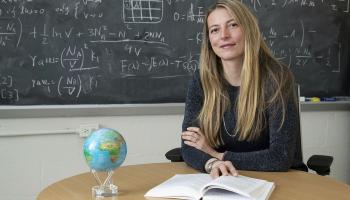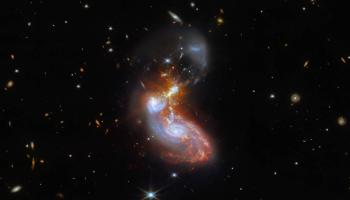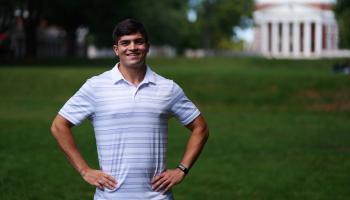Putting Einstein to the Test
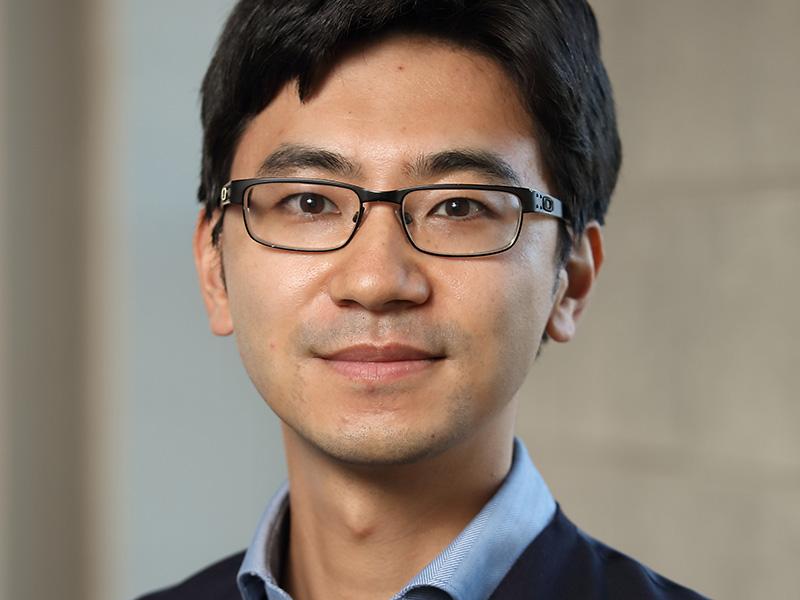
Even before Archimedes proposed that all observable phenomena could be explained using a set of basic rules, human beings have imagined the possibility of a theory of everything. And in the last hundred years, physicists have come closer to solving the problem. Albert Einstein’s theory of general relativity offers a reliable framework for understanding the universe on a grand scale, and quantum mechanics offers us a way to understand the universe on a subatomic level. The trouble is that the two systems don’t agree on how gravity works.
Today, artificial intelligence offers new hope for scientists addressing the massive computational challenges involved in unraveling the mysteries of something as complex as the universe and everything in it, and Kent Yagi, an associate professor with the University of Virginia’s College and Graduate School of Arts & Sciences is leading a research partnership between theoretical physicists and computational physicists at UVA that could offer new insight into the possibility of a theory of everything or, at least, a better understanding of gravity, one of the universe’s fundamental forces. The work has earned him a CAREER grant from the National Science Foundation, one of the most prestigious awards available to the nation’s most promising young researchers and educators.
One aspect of Einstein's theory of general relativity is that objects moving through space generate waves, much like a boat moving through the water, but even when those waves are created by planets, stars and galaxies, or even black holes that can create the strongest gravitational fields possible, they are still incredibly small. Consequently, it was almost a hundred years after Einstein first published his ideas on gravitational waves that the technological means to observe them were developed. In 2015, a program known as LIGO, or the Laser Interferometer Gravitational Wave Observatory, one of the largest projects ever funded by the NSF, detected gravitational waves for the first time, which led to a Nobel Prize in Physics for the project’s leaders.
“The discovery was one of the most important moments in physics in the last hundred years,” Yagi said.
And as the technology needed to observe subatomic phenomena advances, the computing capacity necessary to process massive amounts of data astronomers are collecting about the universe has also advanced. Additionally, new developments in machine learning and artificial intelligence in recent years are allowing scientists to create and test complex mathematical models describing the phenomenon they observe at a pace that was once unimaginable.
Yagi studies the massive gravitational waves generated by pairs of black holes and binary neutron stars – some of the densest objects in the universe that are as much as 1013 times more powerful than a typical fridge magnet, according to Yagi – and he uses those phenomena to test Einstein’s theories about gravity and to probe the fundamental laws of nuclear physics looking for information that will help resolve the disconnect between Einstein’s theory and quantum mechanics.
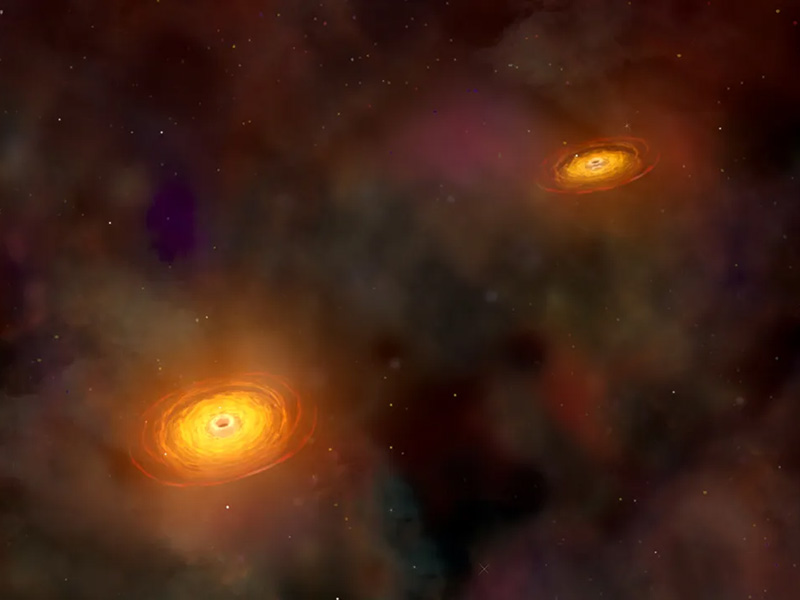
Credit: NASA and NASA’s Chandra X-ray Observatory
The CAREER grant, which will bring $400,000 in funding to the College over the next five years, will create opportunities for current and future graduate students interested in developing and applying machine learning algorithms that will help explain and predict gravitational wave observations and give us a deeper understanding of gravity’s behavior.
Once the computational algorithms are fine-tuned – a process that should take as little as a few weeks – Yagi said his team will be able to process the data collected by LIGO to test Einstein’s theory a hundred times faster.
“And the amount of space we can search for that data will increase by a factor of ten,” Yagi said.
One of the requirements of the CAREER award is that recipients also build educational and community outreach projects into their work, and some of the funding will create jobs for undergraduates who will work with Yagi to develop educational software for high school students interested in physics, which, Yagi hopes, will inspire the next generation of Nobel-prize winning scientists.
How much closer will this bring us to a theory of everything?
“There are still a lot of problems to be solved,” Yagi said. “I’m hoping I’ll see it in my lifetime, but I don’t want to be too optimistic.”
“Proving a theory is almost impossible,” Yagi explained. “There’s always going to be measurement error in any experiment, but we’re going to keep trying to see if we find some evidence to disprove general relativity. At the same time, we just keep discovering how beautiful and correct it appears to be.”
Yagi’s work and the attention it’s receiving drew praise from his colleagues and leaders at UVA.
“There’s been a very big push recently to better understand gravitational waves not only as a theoretical prediction or concept but to be able to directly detect them, said Phil Arras, chair of UVA’s Department of Astronomy. “That effort has opened up an entirely new window into the universe and given us a new way to check our theories about how stars evolve. Kent’s research has been very important for our understanding of that.”
Despina Louca, chair of UVA’s Department of Physics called Yagi a highly respected astrophysicist with a vast research portfolio.
“Kent is an engaging educator and a sought-after mentor whose work has had tremendous impact across several physics disciplines,” Louca added. “He is paving the way to using machine learning to test general relativity while exploring astrophysical properties of neutron stars, and his work with UVA students building online games that integrate research and education will inspire young people around the world.”
“Professor Yagi’s work is remarkable,” said Christa Acampora, dean of the College and Graduate School of Arts & Sciences, “We’re proud to have him as a member of our faculty, not only for the recognition he’s receiving as he advances the boundaries of our understanding about the universe but also for his commitment to innovation in STEM education.”





